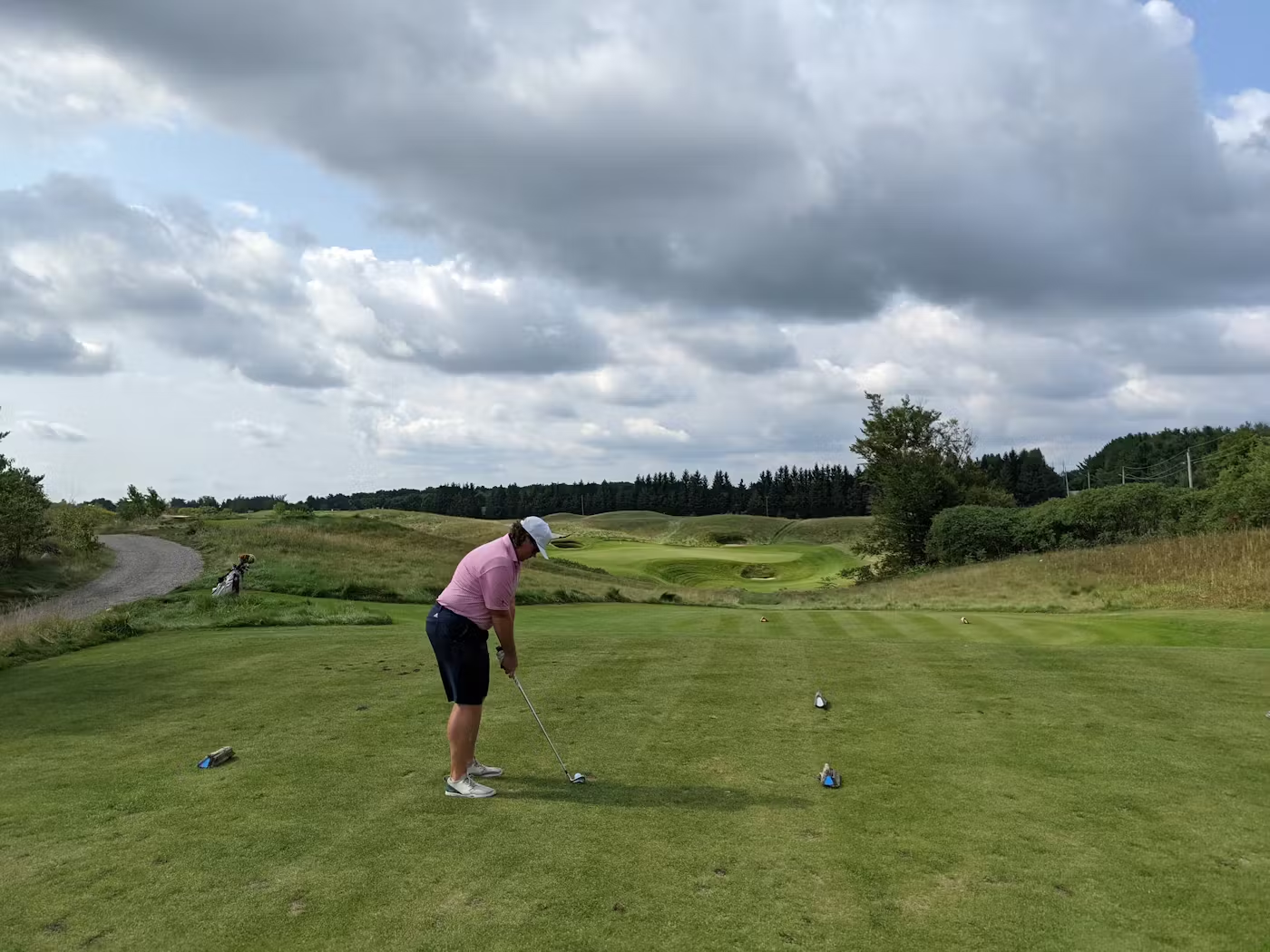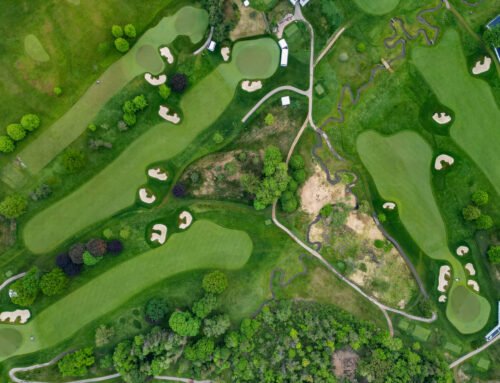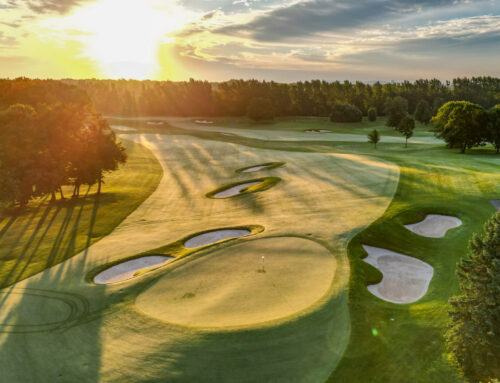The popularity of golf over the past few years has skyrocketed. It remains to be seen if the explosive growth will be sustainable. After all, it has tapered off in 2022. Popularity of the game has grown, but new course development and revitalizing Canada’s golf courses have mostly been for the most exclusive or expensive places.
Many of Canada’s best golf courses are some combination of private, expensive, or remote. Another perspective I often think about is of Canada’s best value courses, many of which are significant distances from large population centres. This leaves much to be desired by public golfers in urban population centre’s.
As we face the pressures of rising real-estate prices, it is logical that course design and renovation is limited. Simply put, Canada is full of aging public golf courses. But, if we don’t put resources into revitalizing, there may not be many exciting public course in years to come. If we are not building new courses, is there an opportunity for existing public courses to expand or revitalize? Can someone move forward with small scale projects that can enhance the playing experience while maintaining budget friendliness?
Lakeview Golf Course: A Case For Revitalizing Canada’s Golf Courses
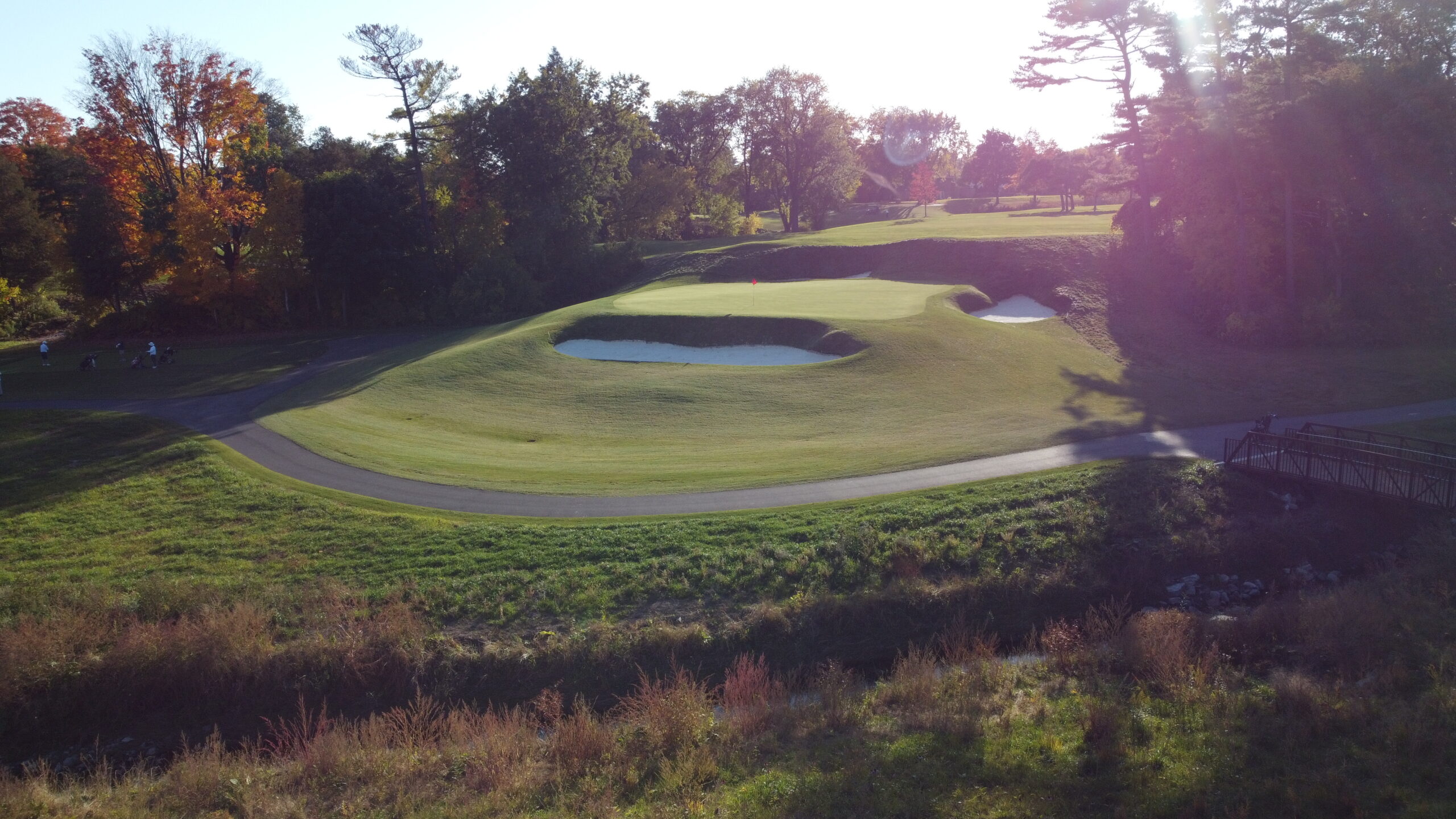
In my mind, the best courses in Canada equally distribute fun factor, repeatability, walk-ability, natural features, and good architectural design into the course. It isn’t always about course conditions, difficulty, or monster length. By improving certain aspects via small but impactful projects, many of Canada’s aging public golf courses can provide a more engaging and better experience.
Take Lakeview Golf Course in Mississauga, Ontario as a key example. Lakeview recently underwent a 9 month revitalization project which has breathed new life into this great golf course. The main purpose of this project was to revitalize Applewood Creek, which starts in the north near 16 tee, and ends on the south crossing hole eight on the way to Lake Ontario. Specifically, the creek has been carefully reconstructed into a more natural winding alignment, providing improved stability and environmental health. The City was also able to update several key aspects of the course, enhancing the course layout, improving playability and restoring historical characteristics.
Revitalization Begins At The First Tee
From the moment you arrive, the changes at Lakeview are immediately visible. Now, the first tee is elevated and re-graded. Additionally, looking immediately to your right, the golfer is captivated by how much more open and friendly hole 18 looks.
While Lakeview only plays 6300 yards from the back tees, it is by no means as easy as the scorecard may indicate. Just take a look at several of the greens around the property. The internal contours are pretty wild. There are severe slopes, ridges, tiers, bumps, and bowls to putt through.
Holes 1-4 play as they did before. No changes, other than the revised tee boxes on hole 1 have been made.
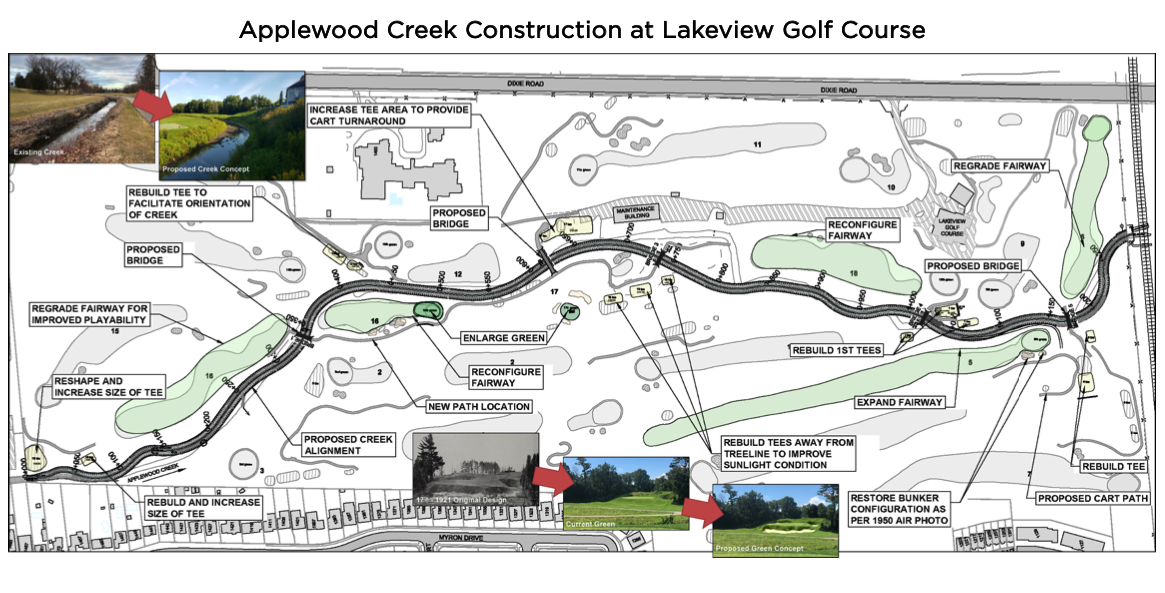
Subtle Changes Improve Playability
No longer does the cart path run down the left closest to the creek on the par 5, 5th. With the cart path moved to the right side and some small, but pesky trees removed, the result is a much more expansive fairway. Two new beautiful bunkers were added in place of the old single bunker found on the right side of the green complex. No changes were made to this diabolical green, its turtleback-esque shaping and internal contours still protects par here.

In my opinion, the toughest holes at Lakeview go back-to-back. The monster Par 4, 6th plays over 440 yards. The tee box at hole 6 and the fence guarding you from balls flying off the tee at hole 8, are new. It is certainly nice to play off a completely flat tee box. Getting a good footing to try and eke out an extra couple of yards off the tee is welcome here.
The short Par 5, 7th provides some reprieve from the difficulty of the last two holes. The slightly downhill and dog-leg right design of this hole is a brilliant contrast to the lengthy nature of the 5th and 6th.
Thankfully, the par 4, 8th is much-improved. The tee shot is easier to visualize and manage with a re-graded fairway. The new fairway now features a consistent slope up, gently working its way uphill, as opposed to the old split fairway. The green remains, but that is likely one of the major projects that needs to happen at Lakeview.

Making Changes Only When Necessary
Following hole 8 fairway re-grading, there have been no changes at holes 9-15 with the exception of new tee boxes at hole 13. What you do find are some lovely golf holes. I especially enjoy the Par 3 10th, a short wedge or iron, depending on where they put the tee that day, across the roadway to a volcano-esque green guarded by bunkers short and right, and drop-offs on all sides. The 11th, pictured below, is another favourite of mine at Lakeview. The slightly uphill semi-blind tee shot is a rush. Picking the correct spot off the apartment building in the background is a great strategy from the tee. The brilliant bunkering, with its fescue edges, is refreshing. I wish this design feature was more prominent around the course.
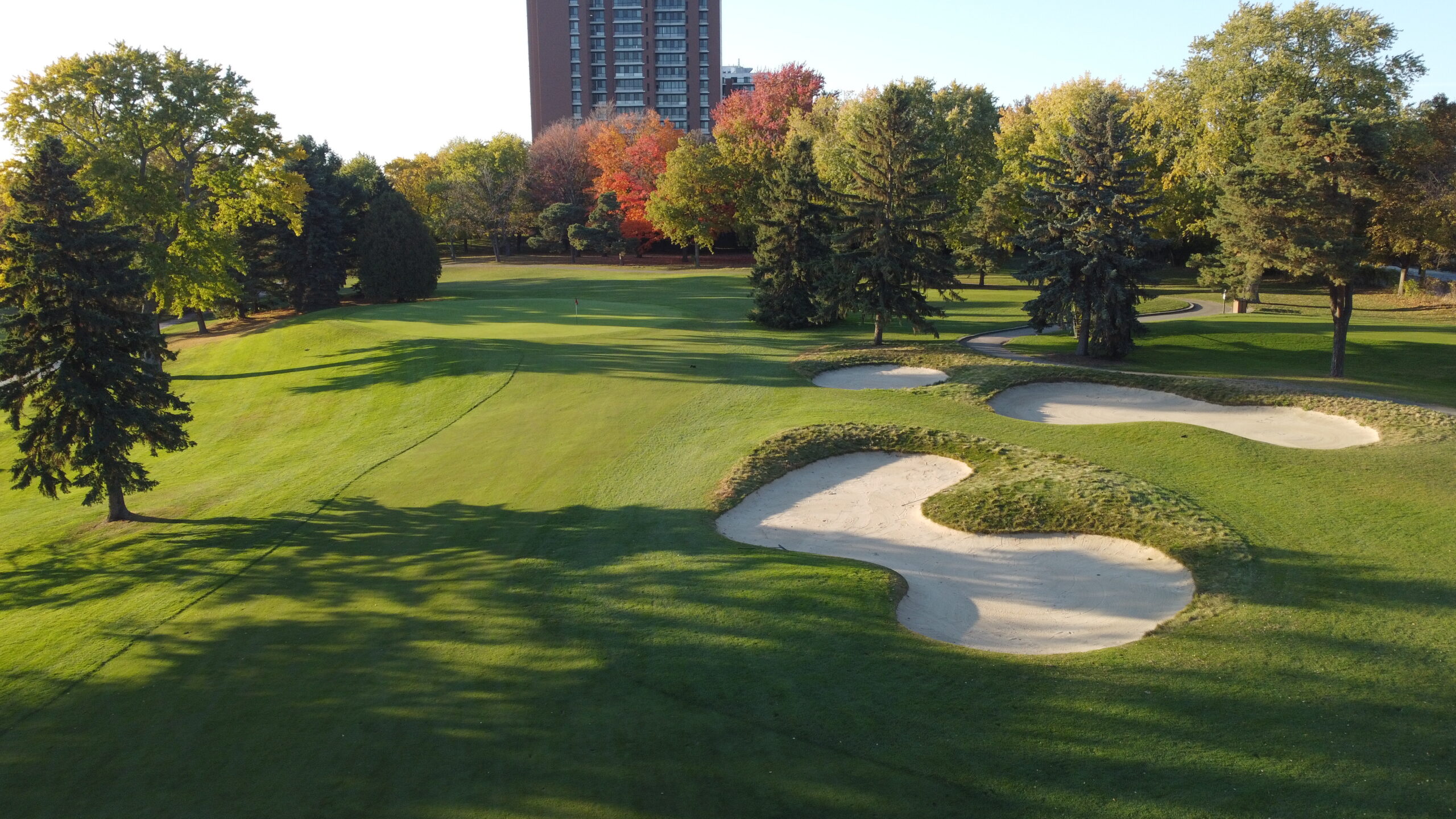
While I wish hole 12 could be ripped up and something drastically different built in its place, it must be said that costly changes likely aren’t going to happen at City run golf courses. The new cart path and new retaining wall between holes 12 and 13 are the final tweaks before the closing stretch.
Holes 13 and 14 are two great Par 4’s at Lakeview. The long 13th plays into the corner of the property. The green complex is another wild one, making this a tough Par 4. 13 is complimented nicely by the shorter 14th and its infinity green. The view of the valley all the way down to the clubhouse from the green is magnificent.
Redefining The Closing Holes
Alterations at 16 have been significant contributors to improving the overall experience at Lakeview. The tee boxes were rebuilt and increased in size. The fairway has been widened and regraded. A new bridge installed and the cart path rerouted to improve playability from tee to green.
The changes at 16 mean long hitters can easily hit a drive up the left side of the fairway, get a generous bounce and have a mid to long iron approach. The three new bunkers replace the old single bunker of similar nature. These new bunkers are visually pleasing and perfectly placed in that 30-60 yard range which makes the up and down devilishly challenging. The green has been expanded some 3 or 4 feet to the left and still heavily slopes back-to-front and canted into the hillside from right-to-left.
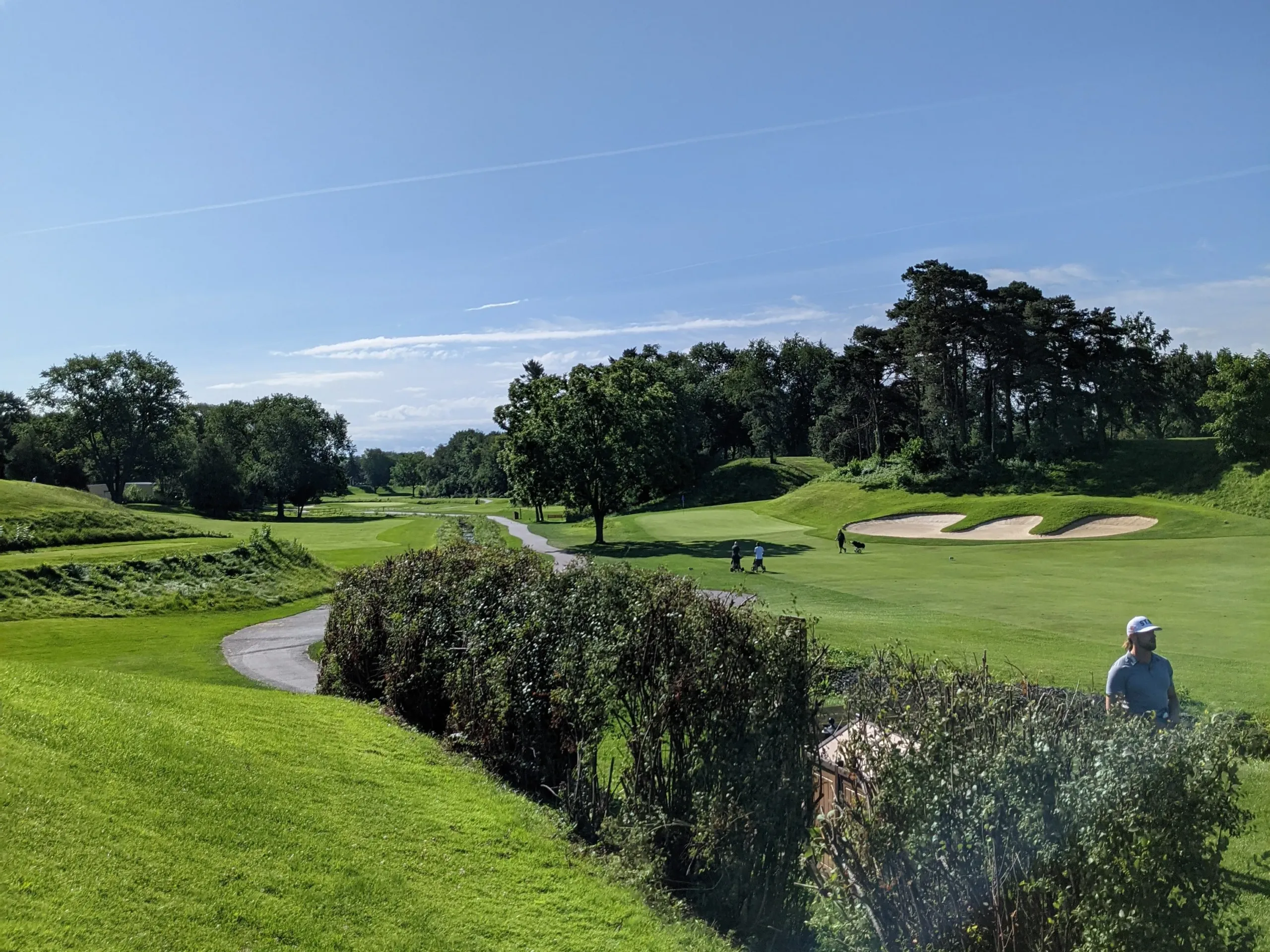
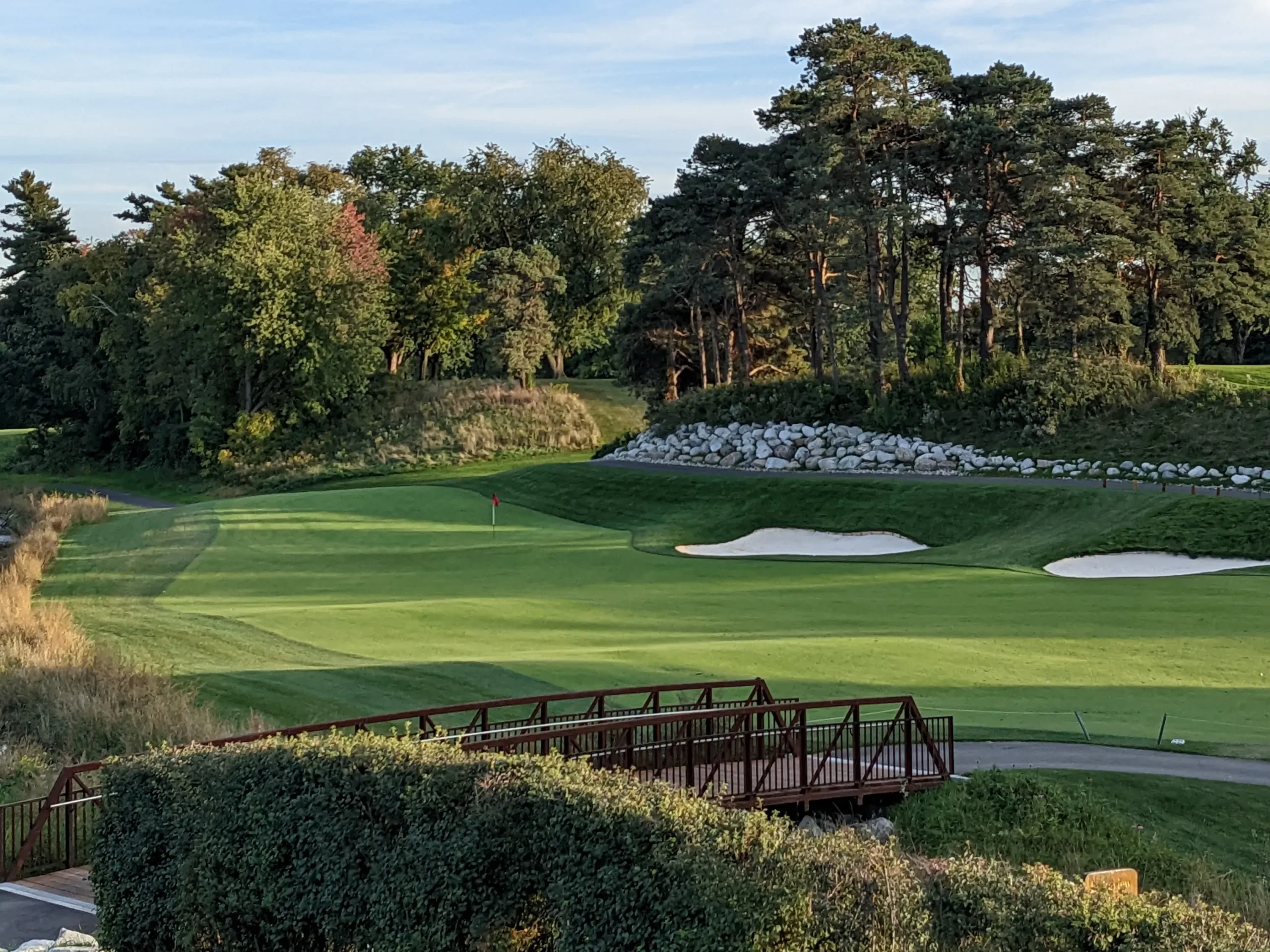
Resurrecting Herbert Strong’s Original Design at 17
The images below provides a glimpse at the original 17th hole back in 1921. This photo allowed the course to resurrect a similar design into the modern golf course. While still only 95 yards, this short Par 3 is magnificent. It is visually beautiful and exceptionally challenging.
The revisions are numerous. The tee box was expanded, providing varying teeing angles at distances of 90-105 yards. The green was expanded and more properly levelled, with some nice internal contours added. A new large, deep bunker that sits 5 feet below the putting surface has been restored. And bunkers at the rear and right side of the green add more difficulty to making up and downs. The fescue that wraps around the hillside at the back adds a nice visual touch. The lower par 3, 17th is gone, including the irrigation pond.
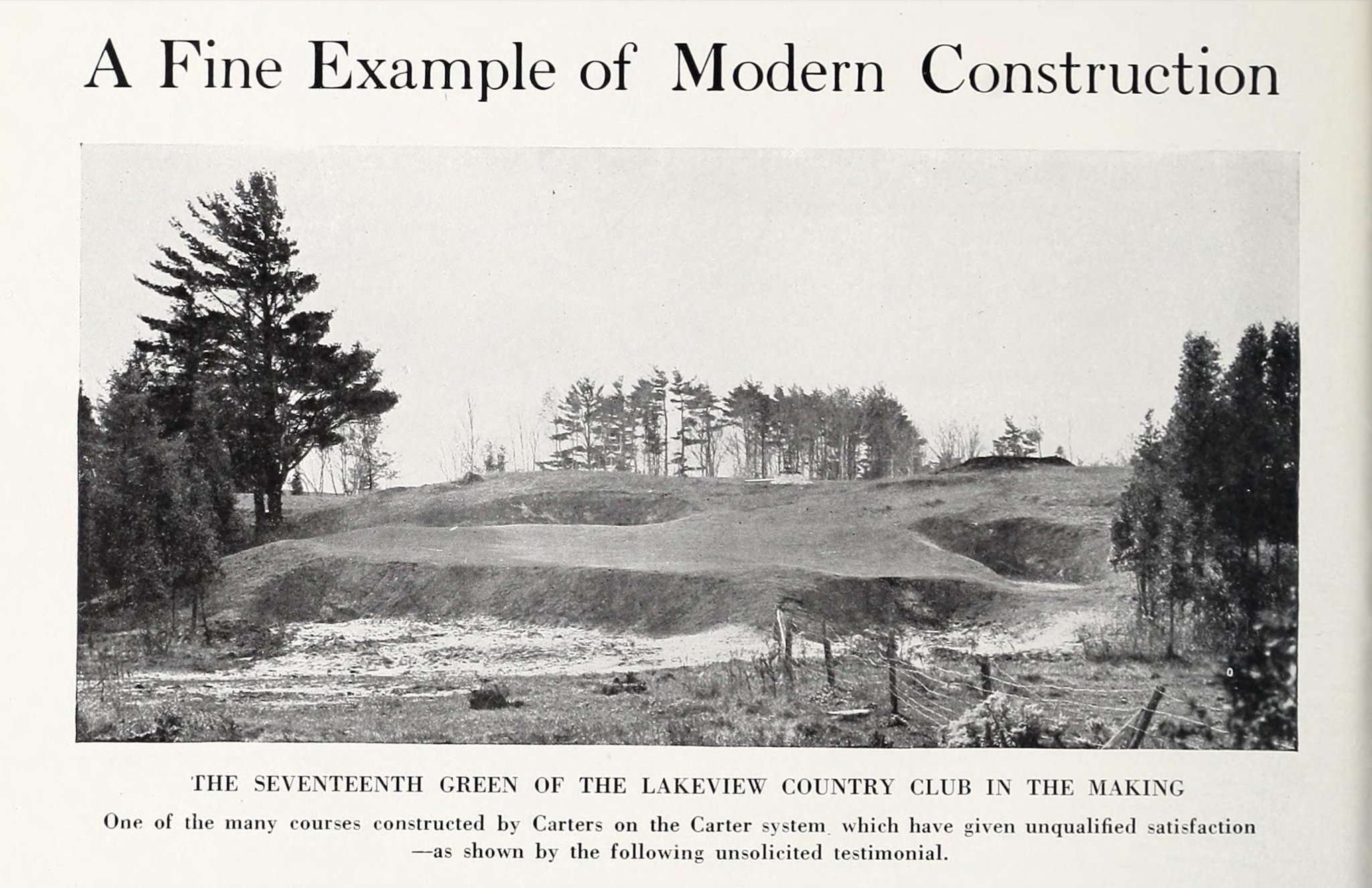
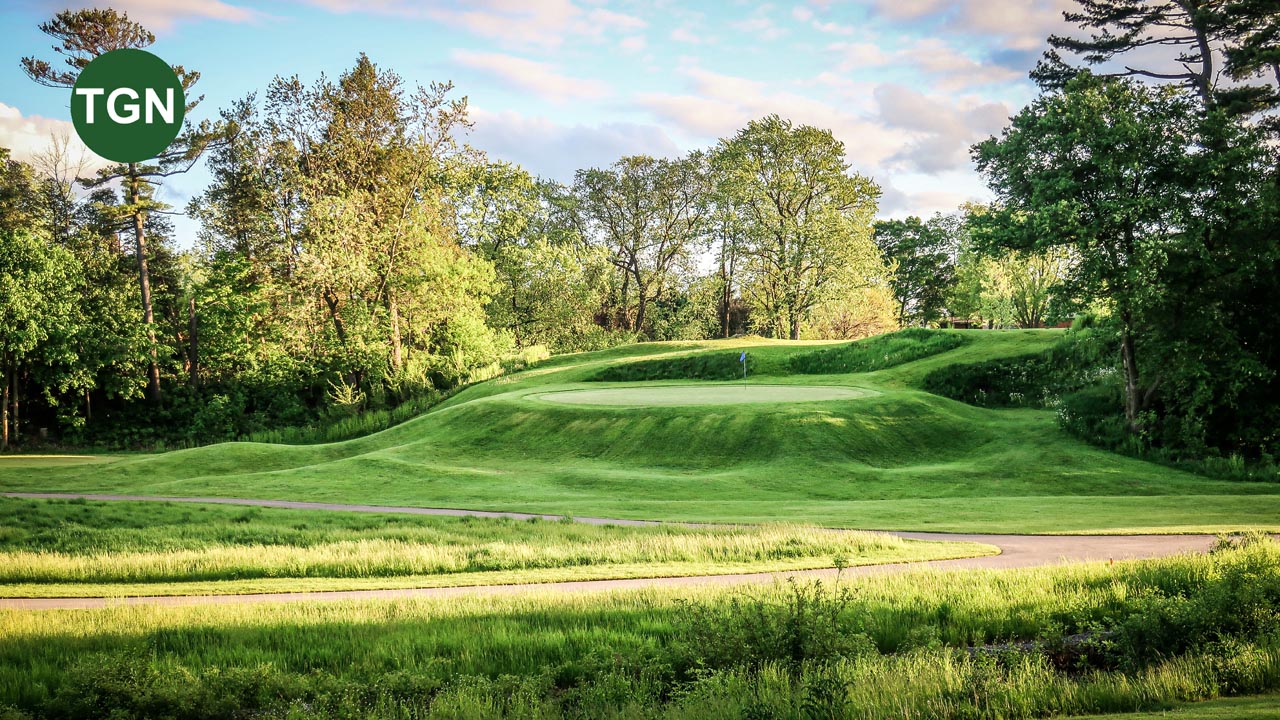

Home
While 17 is the showstopper at Lakeview, the home hole is great in its own right. Revisions have greatly improved the playability, similarly to 16. The tee boxes were rebuilt and moved slightly farther away from the treeline, providing a better angle into the fairway. The fairway was widened and reconfigured, with the bunkers down the left-hand side now removed. The tee box from 1921, atop the hill above 17, is still preserved and available for use today.

I adore the changes made at Lakeview and I hope the city will continue to make some more improvements as the years go by. There are still numerous bunkers remaining which could be updated. Further improvements to some trees overhanging and the regrading and shaping of the green site on Hole 8 would be welcome.
Expect to see Lakeview named to numerous Canadian golf publications Top 100 lists in the coming years.
What’s Next? Three Candidates For Revitalization
Beyond Lakeview there are a couple of exciting upcoming projects around Canada that will help elevate public golfing infrastructure. The revitalization at Waterton Lakes, and a new set of holes at Bay of Quinte Golf Course are of particular interest to me. I believe there are still many examples that could be elevated to this group of Canada’s best without major financial commitments. Additionally, giving design opportunities to young up-and-coming Canadian architects could greatly beneficial for everyone. At Lakeview, Cam Tyers got his chance, and the opportunity is out there.
What I really hope to see is more public courses take the small steps approach as Lakeview has done. And while I acknowledge I have not yet been golfing in Canada west of my home province of Ontario there are a few courses I have played a number of times that come to mind.


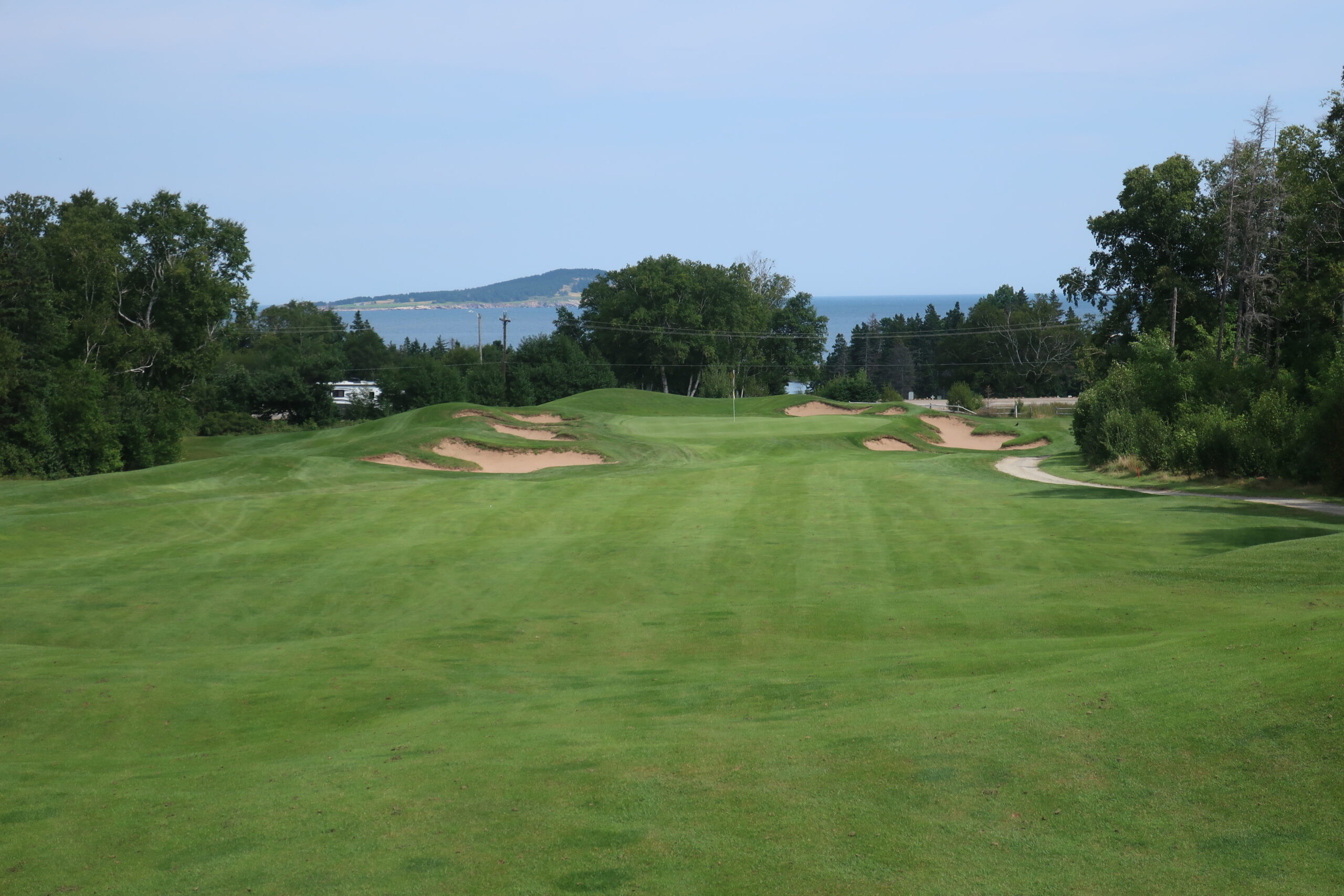
Whirlpool Golf Course — Niagara Falls, Ontario
Whirlpool is one of my favourite courses to play in Southern Ontario. This Stanley Thompson design has a great rolling piece of land with many great features. Like the 9th hole and it’s routing along the ridge line, or the approach at 18 to its green tucked into the hillside and surrounded by bunkers. But many aspects of the course including drainage, bunkers, and greens require updates.
Rockway Golf Course — Kitchener, Ontario
Like Whirlpool, Rockway succumbs to the pressure of being a municipal-owned golf course. Simply, limited funds are available for maintenance and projects around the course. Bunkers, greens, fairways, tree growth, grass growing challenges are found around the property. But it is still a great place for a game, no matter what the conditioning is. I would just love to see the city put some money and love into the place and allow this Stanley Thompson to shine again.
City Of Toronto Golf Courses — Toronto, Ontario
Toronto Parks operates five public golf courses—Dentonia Park, Don Valley, Humber Valley, Scarlett Woods and Tam O’Shanter. Controversially, or not, these courses are vital to the people of Toronto, with over 195,000 rounds played in 2021. They make up 5 of the 7 publicly accessible courses in the City of Toronto boundaries. They create broader economic benefits, they are all accessible on the TTC, and they provide affordable golfing opportunities for everyone.
I do believe Don Valley and Humber Valley in particular could be greatly enhanced with minor tweaks. Perhaps with thoughtful planning, there is an opportunity for the City to improve these existing courses in meaningful ways. More of a major project at one site to adopt a similar 9 hole model like that at Winter Park 9 could be greatly beneficial.
Bonus: Cape Breton Highlands Links — Ingonish, Nova Scotia
Alright, this one is a bonus and perhaps an ambitious ask for numerous reasons, but Highland Links is an incredible golf experience and in my opinion one of the best in Canada. No matter what the conditioning issues are, Highlands Links is stunningly beautiful, incredibly designed and every bit as good as many other World Top 100 courses. While some major projects are likely needed at Highlands Links, a good tree program to help improve airflow and turf health would go a long way for improving the conditions and sustainability of the golf course. Golf North (operating) and the Parks Canada (ownership) should work together to restore Highlands Links as best they can in order to preserve this piece of history for generations to come.


